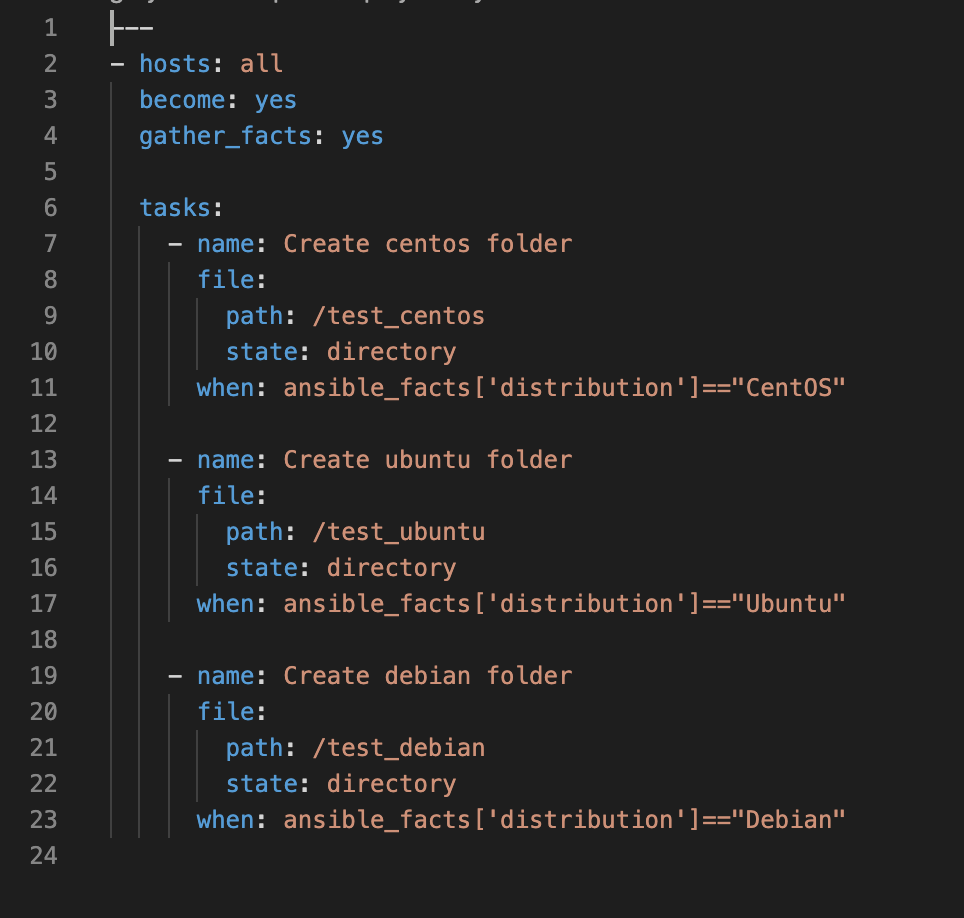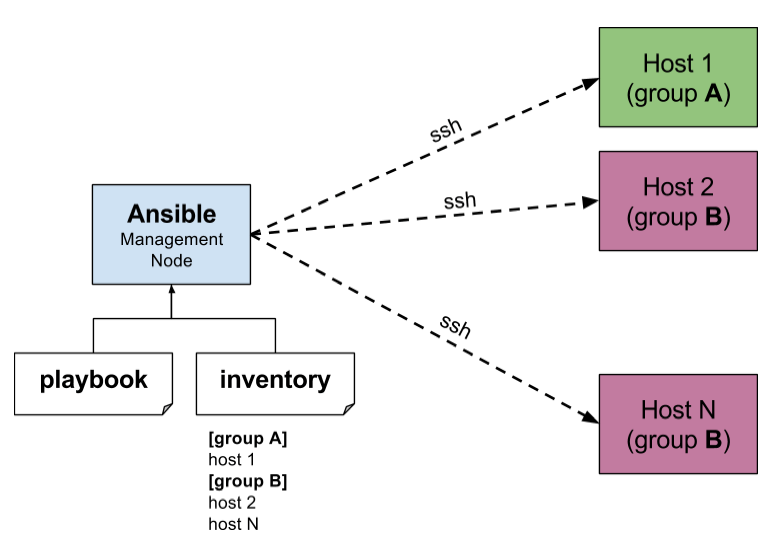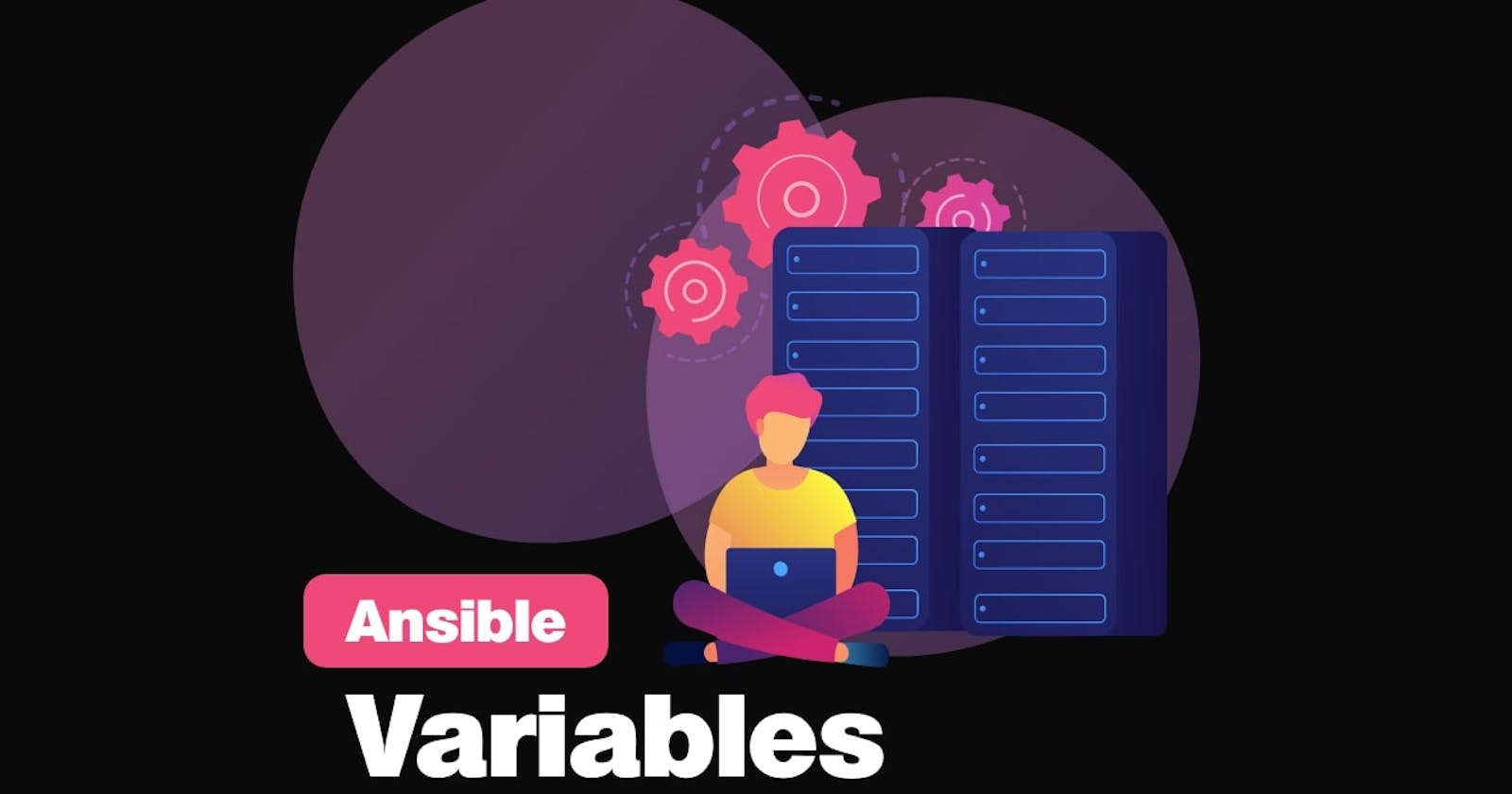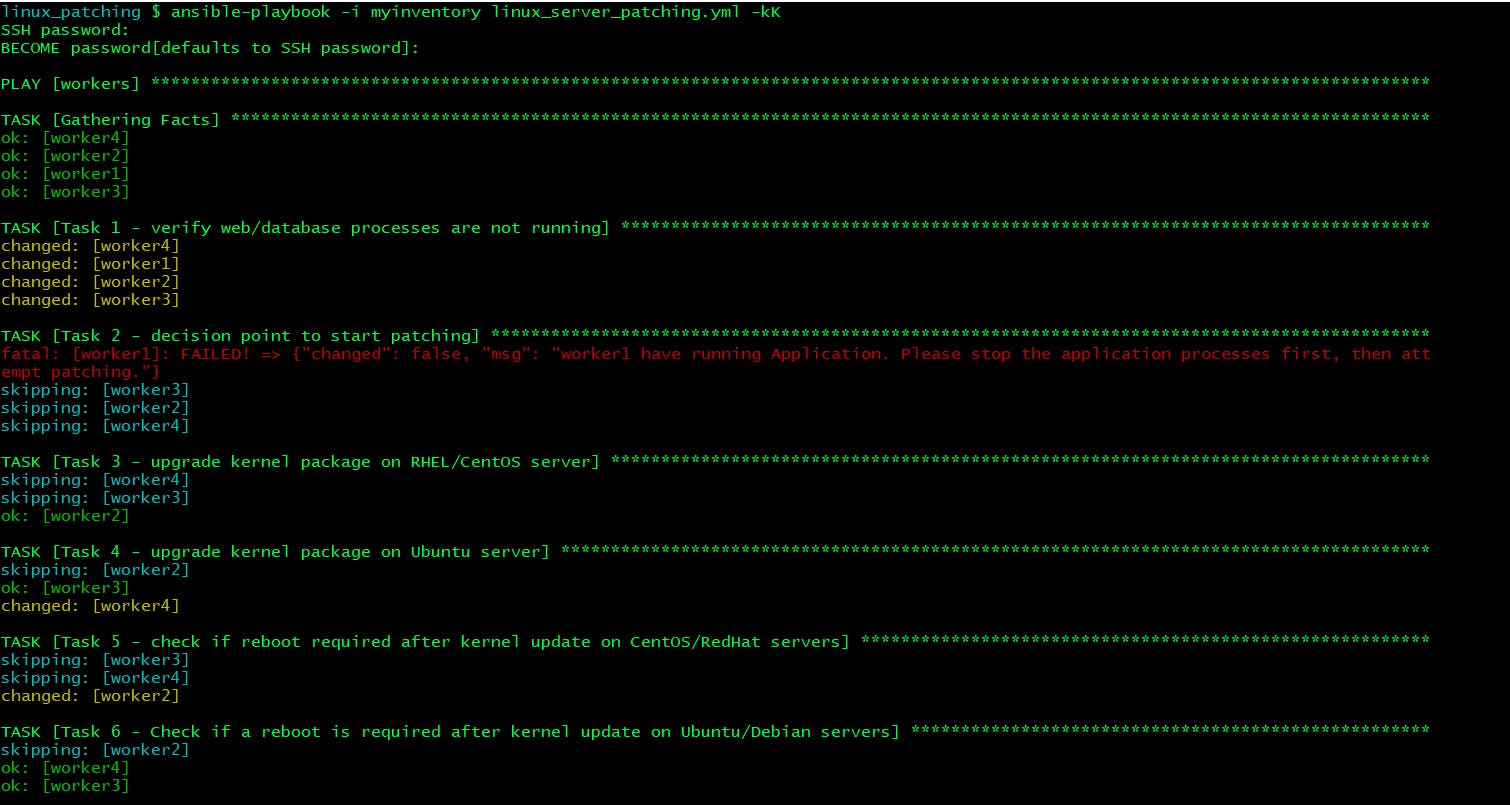Ansible When Os Version
Ansible is an open-source automation tool that simplifies the process of managing and deploying software applications on multiple systems. It provides a simple and powerful way to automate tasks across a wide range of environments, including managing OS versions.
Ansible Basics
Before diving into how to use Ansible for managing OS versions, let’s go over some basic concepts of Ansible.
– Playbooks: Playbooks are the heart of Ansible. They are written in YAML format and define a set of tasks to be performed on target systems.
– Tasks: A task is a single unit of work in Ansible. Each task executes a specific action, such as installing a package, copying a file, or executing a command.
– Modules: Ansible provides a wide range of modules that abstract the underlying system details and allow you to perform various operations. Modules can manage packages, files, services, and much more.
– Roles: Roles are a way to organize playbooks and tasks into reusable units. They can be used to separate different aspects of OS version management, such as updates, checks, or distribution-specific tasks.
Ansible Modules for OS Version Management
Ansible provides several modules that help in managing OS versions. Here are a few commonly used modules:
1. ansible_distribution: This module retrieves the distribution name of the target system. It can be used to differentiate between different Linux distributions, such as Red Hat, Ubuntu, or CentOS.
2. ansible_lsb: This module retrieves the LSB (Linux Standard Base) release information of the target system. It provides details like the release version, codename, and ID of the distribution.
3. stat ansible: This module gathers file metadata for a given path on the target system. It can be used to check if a specific file exists, whether it is a directory, or when it was last modified.
Automating OS Version Checks with Ansible
One common use case for Ansible is automating the process of checking OS versions on target systems. This can be particularly useful when you have a large number of systems to manage or when you want to ensure consistent versions across your infrastructure.
Here’s an example playbook that checks the OS version using the ansible_distribution module:
“`yaml
—
– name: Check OS Version
hosts: all
gather_facts: yes
tasks:
– name: Gather OS information
setup:
– name: Display OS version
debug:
var: ansible_distribution
“`
In this playbook, the setup module is used to gather the system facts, including the OS distribution. The ansible_distribution variable is then displayed using the debug module.
Updating OS Versions with Ansible
Apart from checking the OS version, Ansible can also be used to update it. This can be particularly useful when you need to apply security patches or upgrade to a newer version.
Here’s an example playbook that updates the OS using a distribution-specific module:
“`yaml
—
– name: Update OS
hosts: all
gather_facts: yes
tasks:
– name: Update packages on CentOS
yum:
name: ‘*’
state: latest
when: ansible_distribution == ‘CentOS’
– name: Update packages on Ubuntu
apt:
upgrade: dist
update_cache: yes
when: ansible_distribution == ‘Ubuntu’
“`
In this playbook, the yum module is used to update packages on CentOS systems, while the apt module is used for Ubuntu systems. The when keyword is used to conditionally execute the tasks based on the ansible_distribution variable.
Best Practices for OS Version Management with Ansible
To effectively manage OS versions with Ansible, here are some best practices to consider:
1. Use roles: Organize your playbooks and tasks into roles to improve reusability and maintainability.
2. Use variables: Define variables for distribution-specific tasks to make your playbooks more flexible.
3. Test thoroughly: Always test your playbooks in a non-production environment before applying them to critical systems.
4. Document changes: Keep a record of the changes made to OS versions and maintain an inventory of systems and their versions.
5. Monitor updates: Regularly check for available updates and security patches for your targeted OS versions.
FAQs
Q1: How can I check the OS family using Ansible?
Ansible provides the ansible_os_family variable, which can be used to check the family of the target OS. Common values include “RedHat,” “Debian,” and “Windows.”
Q2: Can I use Ansible to manage OS versions across a mixed environment?
Yes, Ansible supports managing OS versions across different distributions. You can use conditionals based on the ansible_distribution variable to perform distribution-specific tasks.
Q3: Can I limit Ansible tasks to specific hosts or groups?
Yes, Ansible provides the ansible_limit option, which allows you to limit the execution of tasks to specific hosts or groups defined in your inventory.
Q4: What is the structure of an Ansible playbook?
An Ansible playbook consists of a list of plays, each of which references one or more hosts or groups. Inside each play, you define tasks that should be executed on the targeted systems.
In conclusion, Ansible provides powerful modules and features that simplify the management of OS versions. Whether you need to check the current version, update it, or perform distribution-specific tasks, Ansible offers a comprehensive solution. By following best practices and leveraging Ansible’s flexibility, you can ensure consistent and efficient OS version management in your infrastructure.
How To Determine Os Version Using Ansible
Keywords searched by users: ansible when os version Ansible check OS version, Ansible check os family, Ansible_distribution, Stat ansible, How to use when in ansible, Global variable ansible, Ansible limit, Ansible-playbook structure
Categories: Top 62 Ansible When Os Version
See more here: nhanvietluanvan.com
Ansible Check Os Version
In the ever-expanding world of IT infrastructure automation and configuration management, Ansible has established itself as one of the most popular and widely used tools. Ansible enables system administrators and DevOps teams to automate their workflow, thereby saving time and effort. One of the key capabilities provided by Ansible is the ability to check the operating system (OS) version of targeted systems. This functionality is crucial for managing configurations and deploying applications on specific OS versions. In this article, we will explore in depth how to use Ansible to check the OS version and provide answers to some frequently asked questions about this topic.
Understanding Ansible’s Facts:
Before diving into OS version checking with Ansible, it is important to comprehend the concept of Ansible Facts. Facts in Ansible are the system properties that are automatically discovered and collected by Ansible. These collected facts allow Ansible to understand the current state of the target systems, enabling administrators to make informed decisions during configuration management.
One of the facts collected by Ansible is the operating system version, which can be used to perform specific tasks or apply configurations according to the targeted OS version. Ansible is capable of gathering facts from various operating systems, including Linux distributions (such as Ubuntu, CentOS, Red Hat, etc.), Windows, and even network devices.
Utilizing the Setup Module:
Ansible provides the “setup” module, which collects system facts for target hosts. By running this module, you can retrieve an array of information, including the operating system version, network interfaces, CPU details, and much more. To illustrate how to use the “setup” module to check the OS version, consider the following example:
“`yaml
– name: Gather system facts
setup:
gather_subset:
– ‘all’
“`
In this example, the “setup” module is used with the “gather_subset” parameter to collect all possible system facts. By doing so, Ansible will retrieve information about the operating system version, which can be later used in your playbook.
Using the Gathered Facts:
Once the facts about the operating system version are collected, you can use them in conditionals or dynamically target specific tasks. For instance, consider a scenario where you need to install a package only if the target operating system is CentOS 8. Here’s how you can achieve this using Ansible:
“`yaml
– name: Install package on CentOS 8
become: true
package:
name: your_package_name
state: present
when: ansible_distribution == ‘CentOS’ and ansible_distribution_major_version == ‘8’
“`
In this example, the condition in the “when” statement checks whether the operating system distribution is CentOS and whether the major version is 8. If both conditions are true, the specified package will be installed.
FAQs:
Q: Can I check the OS version of multiple hosts simultaneously using Ansible?
A: Yes, Ansible excels at executing tasks on multiple hosts simultaneously. You can define groups of servers or use inventory files to target specific hosts and check their OS versions concurrently.
Q: How accurate are the OS version facts gathered by Ansible?
A: The accuracy of the gathered facts depends on the target system’s configuration. If the target system provides reliable information about the OS version, the facts collected by Ansible will be accurate.
Q: Can I check the OS version of Windows servers with Ansible?
A: Absolutely! Ansible is not limited to Linux systems and can also collect facts from Windows servers. You can utilize the same “setup” module and subsequently check the gathered facts for the targeted Windows systems.
Q: Is it possible to customize Ansible’s OS version checking?
A: Yes, Ansible provides extensive customization options. You can create custom facts or modify the behavior of existing facts by adding plugins or extending the functionality of Ansible. This allows you to adapt to any specific needs or requirements within your infrastructure.
Q: Is it recommended to solely rely on the OS version for configuration management decisions?
A: While the OS version is a crucial factor in configuration management, relying solely on this information might not be sufficient. It is advisable to combine OS version checks with other relevant facts and conditions to ensure accurate and comprehensive configuration management decisions.
In conclusion, the ability to check the operating system version is a valuable feature offered by Ansible. By utilizing Ansible facts and the “setup” module, system administrators and DevOps teams can gather crucial information about their target hosts and make intelligent configuration management decisions. Whether automating Linux distributions or Windows servers, Ansible provides a robust solution for managing diverse operating systems efficiently.
Ansible Check Os Family
Introduction:
In the modern world of IT infrastructure management, automation tools have become essential to efficiently handle complex tasks across various operating systems (OSs). One such tool is Ansible, a versatile and popular configuration management system. Ansible offers robust support for managing diverse systems and streamlining repetitive tasks. But how does it handle different OSs? This article will delve into the topic of Ansible check OS family, demonstrating how this feature enables cross-platform automation.
What is Ansible?
Ansible is an open-source automation tool that aims to simplify IT infrastructure management. It operates on a declarative approach, where users define the desired state of their systems using YAML-based playbooks instead of writing procedural code. Ansible leverages SSH for secure communication and doesn’t dependent on any agents. It automates repetitive tasks with ease, offering tremendous flexibility and scalability.
Understanding Ansible’s Check OS Family:
In order to automate processes efficiently, Ansible needs to identify the underlying OS family of each target system. Different operating systems require different configurations and commands to achieve desired outcomes. Ansible’s ‘check OS family’ feature helps detect the OS family of remote systems, enabling administrators to apply the appropriate set of tasks, modules, or roles to them.
How Does Ansible Check OS Family Work?
Ansible leverages the ‘ansible_facts’ system variable to extract useful information about remote hosts. This variable provides details about the target’s OS, networking, and other relevant information. Ansible runs gathering facts automatically when launching playbooks, but it is also possible to gather facts separately using the ‘ansible_facts’ module.
To determine the OS family of a host, the ‘ansible_facts’ variable provides the value of ‘ansible_distribution’, which represents the name of the operating system. Based on this value, Ansible then assigns the appropriate OS family to the host. For example, if the ‘ansible_distribution’ value is ‘Ubuntu’, the OS family assigned would be ‘Debian’. By leveraging this information, administrators can utilize conditional statements in playbooks to differentiate the OS and perform unique tasks accordingly.
Implementation Example:
Let’s consider a scenario where an organization has a mixed IT environment with CentOS, Ubuntu, and Windows Server as the primary OSs. Ansible check OS family feature can be applied in the following way:
– By using a conditional statement, the playbook can identify the remote host’s OS family.
– Depending on the OS family, the playbook can execute different tasks using appropriate modules. For example, the ‘apt’ module can be used for Debian-based systems, ‘yum’ module for CentOS, and ‘win_package’ module for Windows Server.
– If certain tasks are common across all OSs, they can be executed regardless of the OS family.
FAQs:
Q: Can I use Ansible for automating tasks involving multiple OSs simultaneously?
A: Yes, Ansible is designed to handle multiple OSs simultaneously. Its check OS family feature allows the playbook to execute different tasks based on the detected OS family.
Q: Is Ansible only suitable for Linux-based systems?
A: No, Ansible supports a wide range of operating systems, including Linux, Windows, BSD, and macOS. Its flexibility makes it applicable to almost any IT infrastructure.
Q: How frequently does Ansible run the ‘gather facts’ process?
A: By default, Ansible gathers facts for each target system before executing a playbook. However, you can also run the ‘gather facts’ process separately using the ‘setup’ module.
Q: Can I extend Ansible’s OS family detection mechanism?
A: Yes, Ansible allows users to customize and extend the fact-gathering process by creating custom facts. These custom facts can be used to detect additional properties beyond the OS family, depending on specific requirements.
Conclusion:
Ansible’s check OS family feature is a crucial component of its cross-platform automation capabilities. By automatically detecting the OS family of remote systems, Ansible streamlines the execution of tasks, modules, and roles. This functionality not only saves time and effort but also ensures the desired outcome on different operating systems. As organizations continue to embrace diverse IT environments, the value of Ansible’s check OS family cannot be overstated.
Images related to the topic ansible when os version

Found 37 images related to ansible when os version theme


![What is Ansible pre_tasks? How to Update OS, Install Python and Install JRE on Remote Host [Linux]? • Crunchify What Is Ansible Pre_Tasks? How To Update Os, Install Python And Install Jre On Remote Host [Linux]? • Crunchify](https://crunchify.com/wp-content/uploads/2019/05/What-is-Ansible-pre_tasks-How-to-Update-OS-Install-Python-and-Install-JRE-on-Remote-Host.jpeg)





















Article link: ansible when os version.
Learn more about the topic ansible when os version.
- Ansible playbook to determine OS release – Super User
- Operating System Dependent Tasks – Ansible Tips and Tricks
- Conditionals – Ansible Documentation
- Ansible notes: using ansible to check OS version and services
- Ansible To Get Linux OS Version Details
- How to check the OS version of host which in dynamically …
- Get OS version for an inventory with ad-hoc ansible – GitHub Gist
- Ansible Checks – OS version & Copy module – Server Fault
- Changing Ansible Playbook Depending On Operating System …